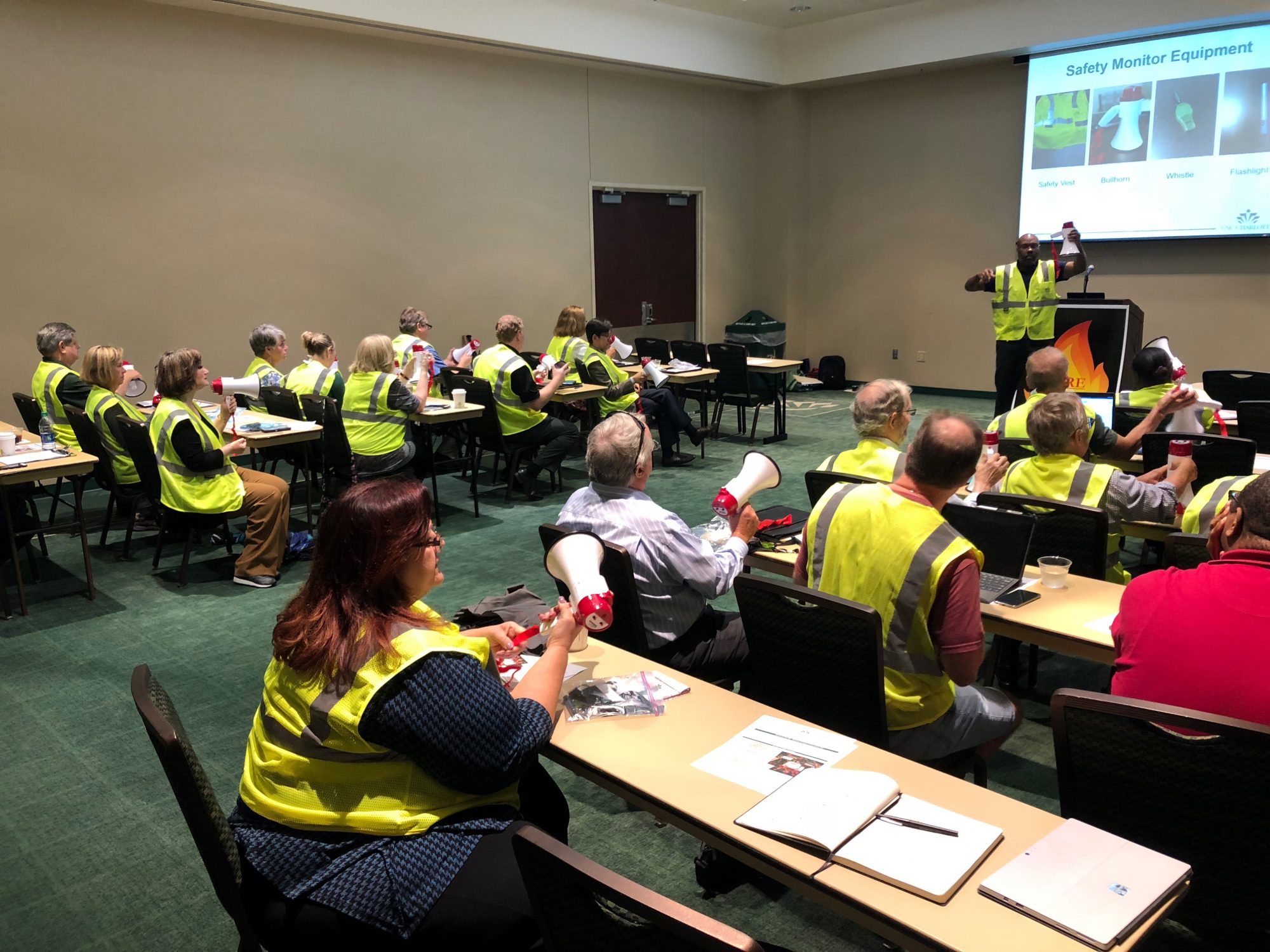Environmental Health and Safety aims to instill a culture of safety
A university is a unique working environment, and the Office of Environmental Health and Safety (EHS) has a specific role to play in ensuring students, faculty, staff and visitors are safe in this setting. Most organizations in the private industry may need to only focus on workplace safety initiatives and compliance programs with the Occupational Safety and Health Administration (OSHA). In addition to adhering to OSHA compliance, EHS reviews various local, state and federal compliance regulations and safety codes, assesses possible hazards on campus and designs solutions to eliminate those hazards. Those safety hazards could be as simple as a water hose stretched across the sidewalk or as complex as working safely with lasers in a laboratory.
“We are constantly looking for an array of hazards that encompass every aspect of your daily activities work,” said Darius Griffin, director of environmental health and safety. “As the University continues to grow, we need to keep safety at the forefront. With the team we have assembled in Environmental Health and Safety, that is our number one goal.”
Over the last few years, Griffin has expanded his team, adding an associate director, managers to oversee EHS’ main functional areas and other individuals on the ground to assist with not only the day-to-day compliance work, but also to develop new education and outreach programs to engage with University employees and promote a safety culture throughout the institution.
 |
| EHS provides training to newly-appointed building safety monitors. |
An example of this is the revamped Building Emergency Evacuation program. OSHA requires institutions to develop emergency evacuation plans for buildings and designate individuals to assist with building evacuations in the case of an emergency. At UNC Charlotte these individuals are known as “safety monitors,” who demonstrate EHS’ emphasis on the importance of safety collaboration with building occupants and emergency responders. Employees are appointed by their vice chancellor and are selected based on their interest in campus safety and their skills and abilities. Those abilities can include a general familiarity with department operations, personnel, facilities and equipment, and appreciation for personal safety, along with an understanding of how these principles are integrated into the University’s mission, and the ability to identify and communicate emergency, safety or security concerns.
EHS developed an interactive and hands-on training program to educate individuals serving in that role. The training included an overview of building evacuation plans and exercises of live evacuations. Safety Monitors also received the necessary equipment to aid them in their evacuation duties: reflective safety vest, whistle, flashlight and bullhorn. EHS is in discussions with other campus partners on ways to expand the safety monitor program to be inclusive of other hazards and training opportunities.
EHS is also getting ready to launch a new online training to better prepare all employees for a fire emergency. The online training module is hosted on Canvas, the University’s learning management system. Participants will be asked to watch a training video and then complete a short quiz.
Griffin’s goal over the next three to five years is to further integrate environmental health and safety into the day-to-day operations of the campus community.
He wants his office to be seen as a partner who can help integrate safety education into the great work being done all over campus–not just an office with a checklist of compliance requirements. His team is meeting with departments, building relationships and learning how they operate in order to find the best ways to make safety become second nature to all employees. Griffin hopes that soon, thinking about campus environmental health and safety will be just as automatic as getting in a car and putting on a seatbelt.
Visit the Environmental Health and Safety website for more information, or email ehsoffice@uncc.edu to learn more.
Story and Photography: Caitlin Mauk